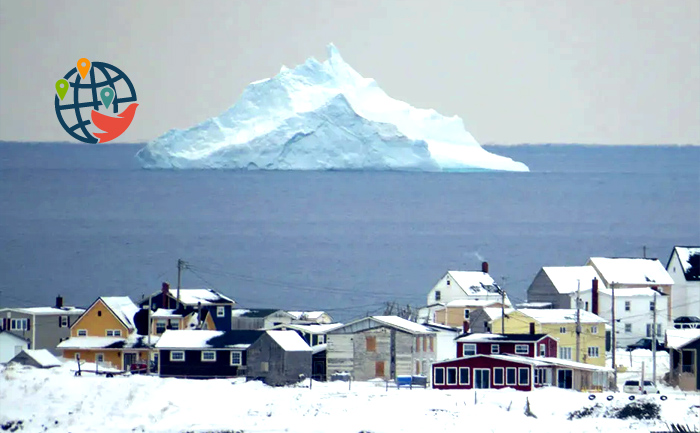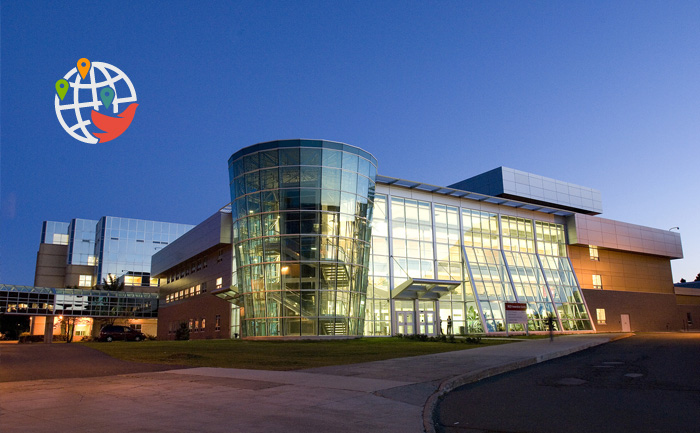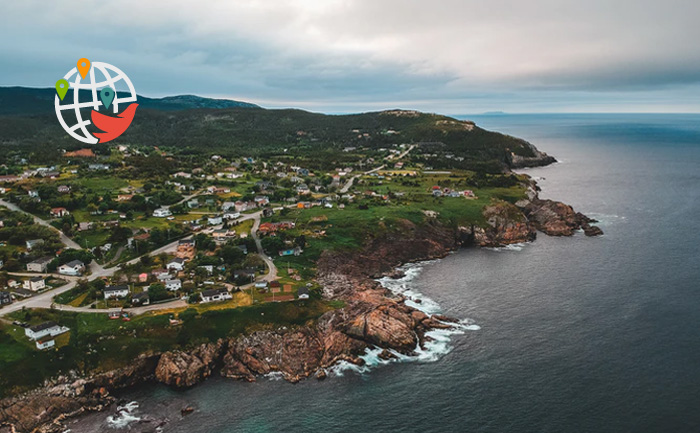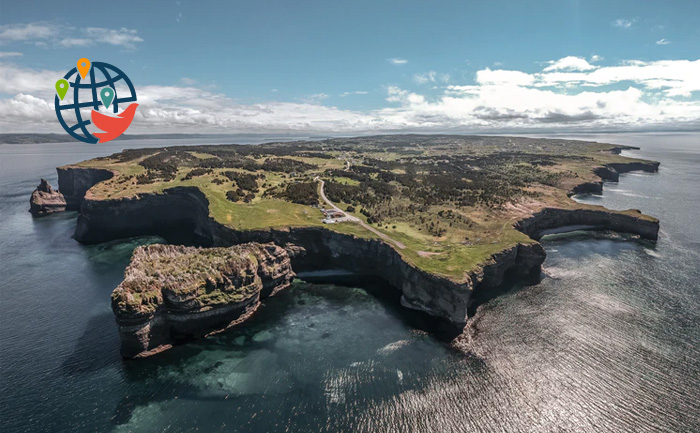Newfoundland and Labrador: a Province with Its Own Unique Atmosphere

Here's everything you need to know about this unique province: from climate and education to jobs, healthcare, and immigration programs.
In this article, we'll cover the following topics:
- geographical location;
- climate;
- where to live;
- crime;
- education;
- work and salary;
- in-demand professions;
- prices and taxes;
- healthcare;
- population;
- what to see;
- immigration programs.
Geographical Location
Newfoundland and Labrador is Canada's easternmost province and the largest of the Atlantic provinces. It consists of the island of Newfoundland and the mainland part, the Labrador Peninsula. It also includes over 7,000 small islands. The area of over 400,000 square kilometers is home to more than 541,000 people. The capital is St. John's, located on the island of Newfoundland.
The province was Britain's first overseas colony and remains the most "English" in Canada — only 2.4% of the population speaks French, less than in any other province. The English here, however, is not simple. Many hear an Irish accent in it, and some settlements even speak the language of Shakespeare's time.
But don't jump to conclusions and write off Newfoundland and Labrador. It's an amazing land with rich history, beautiful nature, unique architecture in cities, and very friendly people. It also has relatively low prices, and the provincial authorities are actively attracting immigrants with relatively simple immigration program conditions.
Interesting fact: Long before Columbus, Vikings from Greenland established a settlement in the province.
Climate: Harsh, but Not Everywhere
Without embellishment, the climate in Newfoundland and Labrador is quite harsh. This is partly why not everyone wants to live in the province. The northern part of Newfoundland Island and the entire Labrador Peninsula are in the subarctic zone. A significant part of the province is covered by taiga, and part of Labrador is tundra. The harsh conditions make agriculture difficult.
In winter, temperatures average between -4 and -20 degrees Celsius, and in summer they rise to only 15 or less. Newfoundland is warmer than Labrador.
The most pleasant climate is on the Avalon Peninsula, which is part of Newfoundland Island. About half of the province's population lives on Avalon, and its capital, St. John's, is located there. The average temperature in July on the peninsula is 15, and in January -4.
Of course, you're unlikely to sunbathe in most of the province's cities. But Newfoundland and Labrador is not the coldest province in Canada, and those who can't stand the heat might even like the local climate. Plus, there's fairly warm Quebec and Prince Edward Island nearby. By the way, the province has its own "resort" town where you can feel real summer, but more on that later.
On the Edge of North America

This weekend Canada switches to winter time

A new era for Canadian athletes

Canada celebrates its National Day and reflec...

Rising inflation in May threatens rate cuts i...

Canada Prepares for a Sharp Increase in the E...

High Auto Insurance Rates for Immigrants Spar...

Canadian intelligence raises alarm: China's i...

Canada continues to attract skilled professio...

How the food supply chain in Canada works and...

The mysterious disappearance of a taxidermy g...

The remains of a mysterious ship have been fo...

Saskatchewan raises age limit for tobacco pur...
Clean air, mountains, forests within walking distance, and an endless ocean around — that's how you can briefly describe life in the province from an environmental perspective. Newfoundland and Labrador is, without exaggeration, one of the best places to admire the beauty of nature.

The province has three national parks, one wilderness park, 18 ecological wilderness reserves, and wonderful botanical gardens.
Province's special feature! From the 29,000-kilometer coastline, you can see whales, seabirds, and icebergs.
Where to Live in Newfoundland and Labrador?
The population of the Labrador Peninsula is only 30,000 people. 95% of people live in Newfoundland. Labrador is mainly populated by those working in the mining industry. Newfoundland and Labrador is definitely for those who don't like big cities and prefer a calm, measured life.
St. John's
About 200,000 locals have settled in St. John's and its surroundings, while the rest mostly live in small towns and settlements along the coastline. Apart from St. John's, there are no large cities in the province.
St. John's is known for its memorable, colorful houses. Modern condominiums can be found along the coast. Heritage preservation laws prohibit very tall buildings here and specify certain building styles. So you don't have to worry about a high-rise suddenly "growing" in front of your house and blocking your beautiful view.
There's an airport 6 kilometers from the city that serves both domestic and international flights.
Perhaps St. John's is one of the best options in the province for moving with children. It has enough kindergartens, schools, and colleges with both English and French instruction. Additionally, Memorial University of Newfoundland is located in the city. The province has an immigration program for its graduates.

Corner Brook
This is the second largest city after St. John's and the center of northern Newfoundland. It's a bit warmer in summer — averaging 17 degrees, and slightly cooler in winter — usually around -7.
The city is quite lively. It has good secondary schools and hospitals, and there's a ski resort. From the perspective of moving with a family, Corner Brook will suit those who prefer private schools — there are plenty of them here. But most children in this city and others attend public schools near home.
Corner Brook is home to a pulp and paper mill, where a significant part of the population works.
Mount Pearl
This is the province's resort town. Here you can bask in the sun: the temperature in summer rises to an average of 23 degrees, and in winter it's the same as in other cities on the Avalon Peninsula. The pleasant climate attracts people, which leads to housing and industrial development.
Still, the city can't be called densely populated — there are just over 20,000 people here. Many come to the city only for the summer.
Other cities
Happy Valley-Goose Bay is an important transportation hub of the Labrador Peninsula. It's located at the intersection of road, sea, and air routes. Accordingly, it's mainly inhabited by those whose work is related to the transport industry. The city has beautiful nature, but it's one of the coldest in the province: the average temperature in January is about -17 degrees, and in July it's only 15.
Stephenville is a small town on the west coast of Newfoundland. It has a modern hospital, schools, a cinema, banks, an international airport, as well as a seaport and colleges.
St. Alban's is the center of aquaculture and hydropower in the province. It's home to a hydroelectric power station, a fish health laboratory, a large hatchery, and a factory producing fishing nets and cages. This city is worth considering for relocation if your profession is related to these fields.
Crime Rate
Newfoundland and Labrador ranks sixth in safety among all Canadian provinces and territories. The number of crimes per 100,000 inhabitants is 6,728 cases. The crime severity index is 82.2.
Education
Memorial University of Newfoundland (MUN)
Memorial University of Newfoundland is the only university in the province, but one of the largest in Canada, located in St. John's. It has over 19,000 students, including about 3,400 international students. Tuition for international students at Memorial University costs $11,460 CAD per year. On-campus housing averages $4,500 CAD per year, though prices may vary depending on the campus and room type chosen by the student. 
College of the North Atlantic
This large public college offers a wide range of programs: about 100 on-campus courses and over 300 distance learning options. It enrolls more than 7,000 students annually. College of the North Atlantic has 17 campuses across the province, including in Corner Brook, with its main campus in Stephenville. Tuition at College of the North Atlantic is significantly lower than at Memorial University. For international students, it ranges from $7,200 to $8,800 CAD per year. Distance learning courses cost $450-1000 CAD.
Private Colleges and Institutes
Students in Newfoundland and Labrador have the option to study not only at public universities or colleges but also at private institutions. Most of these are located in St. John's, further confirming that the provincial capital is the best choice for relocation in terms of education.
Keyin College is a leading private educational institution in Newfoundland and Labrador. Its campuses are located throughout the province. The college's unique feature is not only providing students with knowledge but also teaching them to compete in the ever-changing job market. The college offers a vast array of programs, from hairdressing to business management.
Academy Canada is the largest private college in the province. It enrolls over 1,000 students annually, who study across 35 different programs. The college has three campuses, including in St. John's and Corner Brook, and offers distance learning.
Carpenters Millwrights College focuses on teaching practical skills for students to work in the construction industry. It trains carpenters, builders, decorators, industrial mechanics, installers, etc. This college's unique feature is that it offers scholarships and grants, especially for those who excel academically, volunteer, or face financial difficulties. It's located in Paradise, near St. John's and Mount Pearl.
Where to Work and How Much You Can Earn
Newfoundland and Labrador currently faces challenges with unemployment. The rate stands at 9.6%, the highest in Canada. However, the province has recently been dealing with a severe shortage of specialists as the local population tends to move to other Canadian provinces.
Several economic sectors are particularly developed in Newfoundland and Labrador: pulp and paper industry, mining, hydropower, fishing, and agriculture. It's also feasible to find work in the food sector, forestry, and mines.
The minimum wage is $15.6 CAD per hour. On average, people earn slightly over $26 CAD per hour. Looking at average hourly wages by sector, management personnel can expect $45-60 CAD. Education and law professionals, as well as healthcare workers, earn $30-45 CAD. Transport and equipment operators make $27 CAD, as do those working in natural resources and agriculture. Wages in trade and services are significantly lower, around $16-18 CAD per hour.
The annual salary in the province is approximately $55,000-60,000 CAD. However, it can vary greatly from $27,000 CAD to $481,000 CAD depending on qualifications and position. The minimum monthly salary for full-time work is $2,704 CAD. Compared to other Canadian provinces, wages in Newfoundland and Labrador are low, but this is offset by corresponding prices.
You have seen 58% of the text. This article is available only to users with Premium Access. Want to get access to this and other Premium articles? Subscribe to Premium Access!


















